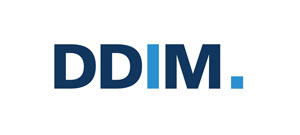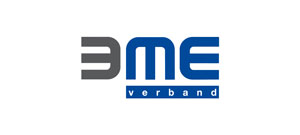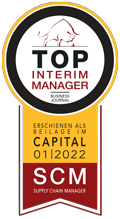

Richard Porstmann
Efficient cost reduction in the company: Ways to sustainable optimization
Reading time: 5 minutes
Table of contents
In a constantly changing business world, characterized by a growing scarcity of resources and increasingly complex economic challenges, effective cost reduction in companies is becoming ever more important. Today more than ever, companies are faced with the need to optimize their operational expenditure in order not only to remain competitive but also to establish sustainable business models.
The latest news impressively illustrates this necessity: recent reports on price increases for important raw materials such as metals and energy sources show how unpredictable external factors can influence companies’ cost structures. In many industries, supply chains are disrupted by bottlenecks and interruptions, which leads to increased procurement costs. These developments make it clear that the ability to react flexibly to changes and at the same time achieve cost savings has become a decisive competitive advantage.
What are costs?
There are different types of costs in a company that must be taken into account when calculating total expenditure. The most important cost items in a company can vary depending on the industry, size and business model. Nevertheless, there are some overarching cost types that are of great importance to most companies and are considered in a cost analysis:
Material and raw material costs
The costs of materials, raw materials and production components required for the manufacture of products or the provision of services can be considerable. Many points in this area in particular remain unnoticed when it comes to investment decisions.
Personnel costs
Employee costs are one of the largest expense items in most companies. This includes salaries, wages, bonuses, social benefits, employee development and all other personnel-related expenses.
Operating costs
This includes a wide range of ongoing operating expenses such as energy costs, rent, office supplies, cleaning, communication, insurance and general administration costs.
A strategic approach for Sustainable cost reduction
As an interim manager, I take a structured approach to a cost-cutting initiative in the company. The first step is an in-depth analysis of the existing cost structure. All cost types such as personnel costs, material costs and operating costs are scrutinized and, among other things, product groups are created. By identifying the main cost drivers, it becomes clear which areas cause the highest expenditure.
The next step is a comparative analysis in which the company’s costs and product groups are compared with industry benchmarks and best practices. This makes it possible to identify deviations and potential for cost reduction. Based on these findings, an individual procurement and purchasing strategy is developed that takes into account the specific circumstances and needs of the company.
Individual solutions for a wide range of challenges
Every company is unique, both in terms of its industry and its internal structures. This is where my expertise comes into play, as I am able to develop customized solutions based on individual process and workflow analyses. Whether it’s integrating technologies for automation, redesigning sourcing and procurement strategies or restructuring workflows, the best data-based decisions will be found for your individual needs.
Focus on people: employees, suppliers and communication
Successful cost reduction requires more than just technological innovations. The human component, consisting of the involvement of employees and the right supplier relationships, is crucial here. On the one hand, an experienced management consultant can build a bridge between the company management and the employees. Communication about planned changes and their effects is essential in order to minimize resistance and promote acceptance. Employees who understand the meaning behind the measures are more inclined to actively contribute to their implementation. As an external party, a management consultant can both act impartially and thus more effectively enforce the wishes of the parties within the employer-employee structure.
A lot also happens “backstage” outside of the above-mentioned structure. Good cooperation with the right suppliers can be a support for the company and lead to the elimination or avoidance of stumbling blocks. But finding the right partner is not easy. I therefore take on this task by looking for the optimal partner for you through supplier discussions and building up a functional supplier relationship through efficient supplier negotiations.
A look into the future: sustainable competitiveness
The business world is constantly changing and the ability to adapt is invaluable. When cost-cutting strategies are planned, my aim is to ensure that they not only have a short-term effect for your company, but also meet future challenges. This is about:
- Conclusion of framework supply agreements: By concluding framework supply agreements, advantageous contractual conditions are laid out for future years and thus guaranteed for a longer period of time.
- Implementation and monitoring of measures: Cost reduction is an ongoing process. My job is to actively tackle the implementation of measures and to accompany the process, analyze the results andadjustthe strategy if necessary.
- Management feedback: I will continue to stay in contact with you to report on savings achieved and further potential so that you as management are kept up to date on the progress of cost reduction initiatives through my reporting.
Conclusions
- Strategic cost reduction is becoming increasingly important in times of economic uncertainty and resource scarcity.
- Cost savings should be considered as part of a comprehensive approach to sustainable corporate management.
- Proven solutions and responsible resource management are key to ensuring financial stability.
- A strategic approach is taken to achieve sustainable cost reductions by forming procurement and purchasing strategies based on cost and comparative analyses.
- An interim manager ensures the implementation of anoptimal relationship between entrepreneur, employee and supplier.
- Cost reduction strengthens resilience to unforeseeable developments.
- Effective cost reduction creates long-term competitive advantages and helps to secure the future.
If you have any suggestions or thoughts on this topic, please write to me.






